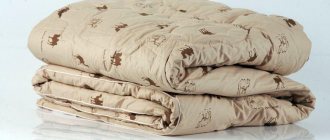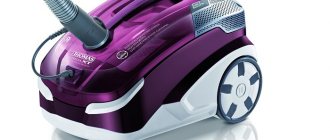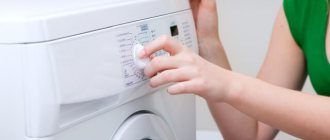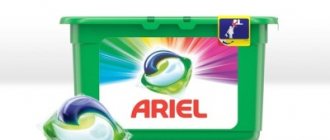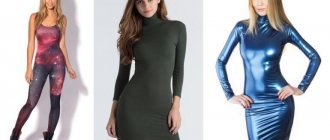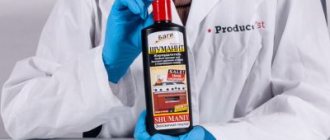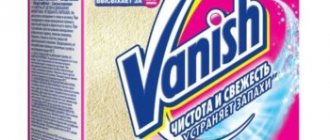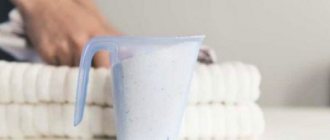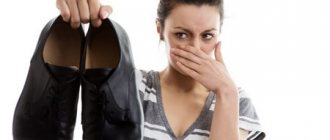Have a good day and good mood everyone! Today, my dear reader, I propose to consider a question dedicated to such fabric as polyester. You've probably heard this name quite often, because it follows us in almost every textile item used in everyday life: towel, pillow, blanket, dress, blouse, tights, etc. As you may have guessed, this list can be continued for quite a long time. Have you ever asked questions like: What is polyester? Why is polyester added to the main fabric? What properties does polyester have? Why was polyester invented in the first place? If not yet, then I suggest you think about it, get answers, and start, traditionally, with the history of its origin.
1. The history of polyester; 2. Polyester production technology; 3. Properties of polyester; 4. Polyester in combination with other fabrics; 5. Using polyester; 6. Care of polyester products; 7. Customer reviews.
What is polyester
The second name of this material is polyester; it is made synthetically from polyester fibers obtained from polystyrene, a product of petroleum and hydrocarbon refining.
Today it ranks first among all synthetic fabrics. 50% of global textile production relies on the properties of this particular fabric.
Products made from 100% polyester can be thin in appearance, like a veil or chiffon, or durable, like raincoat fabric. Sometimes they feel like wool or cotton. This diversity is explained by the structure of the fiber, the peculiarities of its processing, and the weaving of the fabric.
Both men's and women's products are made from polyester, and less often children's products. They also sew covers and capes for furniture, curtains, carpets and much more.
Video: how polyester is produced
We recommend watching an interesting video about the production of polyester and its varieties, from threads to fabric.
See similar articles
- Blackout - light-proof dense fabric for curtains
- Milano - dense soft knitted fabric
- Matting is a rough natural fabric that is pleasant to the touch
- Cotton is a popular natural fabric
- Drape - thick woolen fabric for warm clothing
- Kulirka - thin cotton fabric for children's clothing
If you liked the article, share it with your friends!
History and production
The first experience of polyester production abroad dates back to the 30s of the last century. It appeared in Russia in 1949, and became widespread in the 60s in the production of packaging materials and adhesive tapes.
There are several main stages in the production of polyester:
- preparation of main raw materials - hydrocarbons and oil;
- processing of raw materials with subsequent separation of polystyrene;
- producing liquid polyester from polystyrene;
- chemical purification of the resulting mass;
- formation of polyester fibers;
- giving the fibers the required qualities;
- linen production.
To improve the properties of polyester or to produce a qualitatively new material during the production process, polyester is combined with other fibers of both natural and artificial origin.
With strict adherence to GOST standards in the technological process, the resulting material should not have a chemical odor or leave stains or traces of paint on the body.
Photo: what polyester fabric looks like
In its pure form, synthetic polyester looks like snow-white wool, perfectly imitating natural fibers. After adding other fibers to the composition, the fabric takes on the appearance and properties of the added materials. Polyester can be fluffy or smooth, shiny or matte, in different sizes and fiber weaves. In the photo below you can see how different polyester materials look.
Composition and characteristics of polyester fabrics
- In combination with polyamide, a lightweight, elastic material reminiscent of silk is obtained. It is elastic, wear-resistant, holds its shape and color well. The disadvantages include the low heat resistance of the fabric and its low hygroscopicity.
- The combination of polyester and elastane produces a material that has excellent stretch and, despite its low density, has good strength and breathability. However, items made from such fabric are sensitive to direct sunlight and may fade. Most often, socks, stockings, gloves and other tight-fitting items are made.
- When cotton is added to polyester, it creates an ideal fabric for bedding and knitwear. The material is hygroscopic, resistant to sun exposure, dries quickly and does not wrinkle.
- Polyester significantly improves the quality of viscose, making it more durable and resistant to color loss. The ratio of 30% viscose and 70% polyester is ideal for sewing home and work clothes.
Comparison with other materials
Compared to natural materials, polyester is stronger, more durable, more elastic, holds its shape better, and better withstands adverse weather conditions. Inferior to cotton fabrics in terms of hygiene, it is not suitable for making the first layer of clothing for babies and people with sensitive skin.
Compared to other synthetic materials, polyester is afraid of high temperatures and requires careful attention. If care rules are not followed (washing in hot water, ironing with a hot iron), the fabric is prone to deformation and destruction.
Polyester Density Unit
Den is an indicator of the linear density of threads in a fabric, the ratio between weight and length. 1d is 1 gram of thread per 9 kilometers. The higher the numerical indicator, the greater the density.
- 300d is a fairly dense fabric that is widely used in the manufacture of sports and travel equipment, clothing and accessories, threads, and yarn.
- 500d is a dense material from which equipment for various sports is made. It is also used to make awnings for trucks, tents, backpacks and bags.
- 600d – characterized by resistance to external aggressive environments. It has low electrical conductivity and repels water well. The scope of application of the fabric is the same, but the products are a class higher.
- 900d - this fabric density does not allow not only water to pass through, but also ultraviolet rays. It is used to make high-quality equipment and workwear suitable for extreme conditions. By combining polyester with nylon, incredible strength and elasticity is achieved.
Pros of clothing
They have the following advantages:
- strength and wear resistance;
- resistance to fading and chemical attack;
- presence of water-repellent characteristics. The products are not afraid of rain or snow;
- optimal price-quality ratio;
- long service life;
- ease of care. Easy to wash, does not wrinkle, keeps its shape well after washing;
- the products are light, with a pleasant texture and hypoallergenic;
- do not allow air to pass through, retain heat well;
- weak antistatic effect;
- A wide variety of different types of fabrics are made from polyester;
- resistant to mold, moths;
- the production of synthetic materials is regulated by GOST.
Due to its unique features, polyester is in demand in everyone in many areas of life. The name polyester can be found on the labels of casual, outerwear, workwear, and tracksuits. Spectacular and warm jackets and fashionable coats are given to us by models made of polyester fabrics. Sports sets combine the characteristics of comfort, warmth and aesthetic appearance. Workwear impregnated with special bases will be resistant to chemical and thermal influences.
Polyester sweater
The addition of synthetic thread gives a premium look to shirts, trousers, dresses and underwear. The softness and convenience in everyday life have long been appreciated by zealous housewives, using bedding sets, bedspreads and pajamas. Sweaters, jumpers, pullovers, turtlenecks are presentable examples of high-quality knitwear.
Customer demand has long noted the lining base as the most comfortable and durable, and the insulation as the warmest and lightest. The children's world is in constant friendship with such fabrics. Using them to sew fun, beautiful and safe toys. Polyester is indispensable in travel equipment: durable and waterproof tents and sleeping bags are very valuable for a good trip. Synthetic textures accompany us even among everyday accessories and small things: umbrellas, gloves, curtains, ties, haberdashery.
When caring for clothes, it is useful to take note:
- Products should be washed in a delicate cycle, not exceeding 40;
- do not use bleaching agents;
- dry on a horizontal surface;
- products do not need ironing.
Are there any weaknesses?
When synthetic fabrics are heated strongly, their shape may change. This can be attributed to both disadvantages and advantages. When designing clothing models, folds and flounces are sometimes needed, which are obtained by applying a higher temperature to a certain part, thereby fixing the plan.
There are different types of synthetics. Of course, being 100% present is not an acceptable option. But there are many compositions worthy of attention: lace, elastane, suplex, microfiber, fleece, stretch polyester, micro-oil, nylon, Oxford, twill and other varieties will satisfy the most fastidious.
Types of fabrics made from 100% polyester
- Jordan is a fabric with the addition of polyurethane. It has a smooth iridescent surface with high wear resistance. It is waterproof and windproof.
- Duspo is a dense fabric impregnated with polyurethane. Able to repel water and dirt, protects from wind.
- Prince is a matte silky fabric with waterproof impregnation and windproof properties.
- Bonding is a dense, breathable fabric that protects from cold. It provides comfort and warmth in winter, which is why children's outerwear is made from it.
- Trilobal - has a beautiful pearlescent sheen, and therefore clothes are made from it mainly for children and women.
- The file is a fairly dense material with a good aesthetic appearance. The fabric is water- and windproof, dries quickly, keeps its shape and appearance.
- Taffeta is resistant to moisture and chemicals. The material is in demand in the production of equipment for tourists and rescuers.
- Memory - the fabric remembers the previous impact on it - creasing or smoothing.
For what purposes can it be used?
The use of polyester in other fabrics reduces the cost and makes them accessible to the mass consumer.
The following are sewn from fabrics containing polyester:
Casual clothing: men's trousers, shirts, socks, women's dresses, skirts, stockings, underwear
Outerwear: windbreakers, raincoats, jackets
Headwear: caps, baseball caps, sports hats
Insulation for outerwear
Workwear
Home textiles: bed linen, blankets, bedspreads, tablecloths, curtains
Accessories: umbrellas, gloves, ties, scarves, bags
Travel equipment: sleeping bags, tents, awnings
Children's soft toys, flags
Advantages of polyester
The percentage of polyester in the fabric in relation to other materials may be different. However, even with a small content, its properties give the products a special value:
- the material does not wrinkle and does not require intensive ironing;
- easy to wash and dry quickly;
- does not stretch or fade;
- products are light, durable and elastic;
- wear-resistant and durable;
- do not attract moths and other insects;
- have a low cost;
- do not absorb odors:
- pleasant to look and feel.
Main disadvantages
The negative qualities of polyester fibers include:
- Do not use bleach or high temperature washing. Synthetic materials are susceptible to degradation;
- density; wearing such products in hot weather will be uncomfortable;
- things can accumulate static electricity and be attracted to the body. The use of conditioners after washing and special products will reduce this defect to a minimum.
Modern technologies make synthetics absolutely safe. And today you shouldn’t be afraid of unnaturalness in clothes. The use of such fibers for insulation: polyfiber, Thinsulate, makes winter clothing universal: light and incredibly warm.
Jackets and coats have a very attractive appearance and protection from severe frosts. Synthetics and polyester have long ceased to be outcasts, but have become respected and revered guests in every wardrobe.
Read more about the pros and cons of polyester clothing.
Are polyester bedding harmful?
Pants for women with padding polyester
Areas of use
Polyester, a synthetic fiber, is widely used in the textile industry. Everything is sewn from it, from underwear to outerwear, workwear and uniforms, lining fabrics, bedding and covers for furniture and cars, school bags, backpacks, umbrellas, and soft toys are made.
It can also act as insulation (sintepon, holofiber).
As before, 100% polyester is used to produce packaging materials, strapping tapes, and towing ropes that can withstand enormous loads, only slightly inferior to their metal counterparts. At the same time, the cost of such products is much lower.
Important Takeaways
Polyester is a unique fabric with a number of undeniable advantages. To make it, it is necessary to carry out a complex chemical reaction. However, this does not stop manufacturers.
In addition, this material is considered the most popular among synthetic analogues. It is wear-resistant, inexpensive and easy to maintain.
Have you ever come across products that literally fascinated you with their softness and practicality? It turns out that fleece fabric, which is discussed in our article, has these advantages.
If you prefer beautiful natural materials, then cambric with embroidery is an excellent choice. Let's look at its positive qualities using this link.
What are they - the fabrics of the future? Let's look:
© 2022 textiletrend.ru
Product care rules
- it is necessary to follow the manufacturer's recommendations for caring for the product indicated on the product label;
- The recommended temperature for washing is no higher than 40°C, so that the product does not lose its shape;
- When washing by machine, only the delicate cycle with low spin speed is selected;
- you should absolutely not use bleach, as it can ruin the structure of the fabric;
- to reduce the electrification of the item, you can add fabric softener when washing, or use a special antistatic agent;
- If necessary, the product is ironed from the wrong side through an iron, setting the iron temperature to a minimum.
Care instructions
Polyester products do not require special care:
- Can be washed by hand or on delicate cycle in a washing machine at temperatures up to 40 degrees;
- You can use air conditioner and static electricity remover;
- stains from fabric can be easily removed with soapy water;
- the use of bleach is prohibited;
- After washing, the product should be shaken well and dried on a hanger;
- Ironing is rarely required; for 100% polyester it is contraindicated;
- If it is necessary to iron the product, to protect it from burning and the appearance of shiny spots on the surface, the iron is set to the minimum temperature, the product is ironed from the inside out, you can additionally use damp gauze.
Varieties of polyester fabric, depending on the composition of the fibers, may have features. To avoid damage to the product, before washing and ironing, you should carefully read the information on the tag and follow it exactly.
Reviews
According to the general assessment, products containing polyester are lightweight and comfortable. Such things are beautiful and much more practical than those with a 100% natural composition.
It has been noticed that after many washes the item retains its color and shape. Easily removes stubborn stains and dries quickly.
Many questions arise regarding the correct ironing of polyester products, which can be resolved by studying the basic rules for caring for things, as well as purchasing a ceramic attachment for the sole of the iron or gauze (using grandma’s method).
Flaws
In hot weather, wearing such clothes may be uncomfortable. This is due to the fact that the material has a high density. It is better to look for models with a synthetic content of up to 50%. To feel good in polyester products, choose sleeveless, loose-fitting options. The harmfulness of the material has not been proven, but you should not wear such clothes around the clock.
Flaws:
- The fabric does not allow air to pass through well, so the sweating process may be disrupted.
- rigidity of products.
- cannot be painted.
An outfit made from this material has one unpleasant property. It accumulates static electricity. This leads to the fact that the fabric sticks to the human body - the clothes must first be treated with an antistatic agent. Some people may have allergies, in which case such things should be avoided.
An outfit made from this fabric is simply irreplaceable in the wardrobe of a modern person. It has many more advantages than disadvantages. Such products are in great demand.
